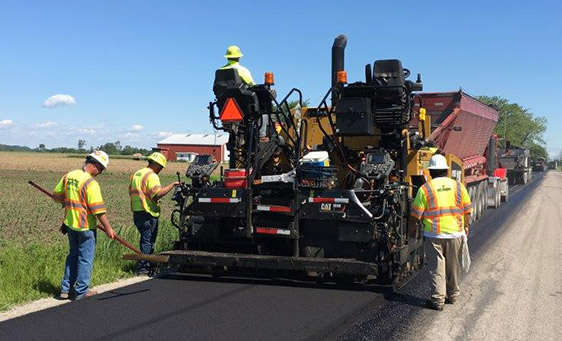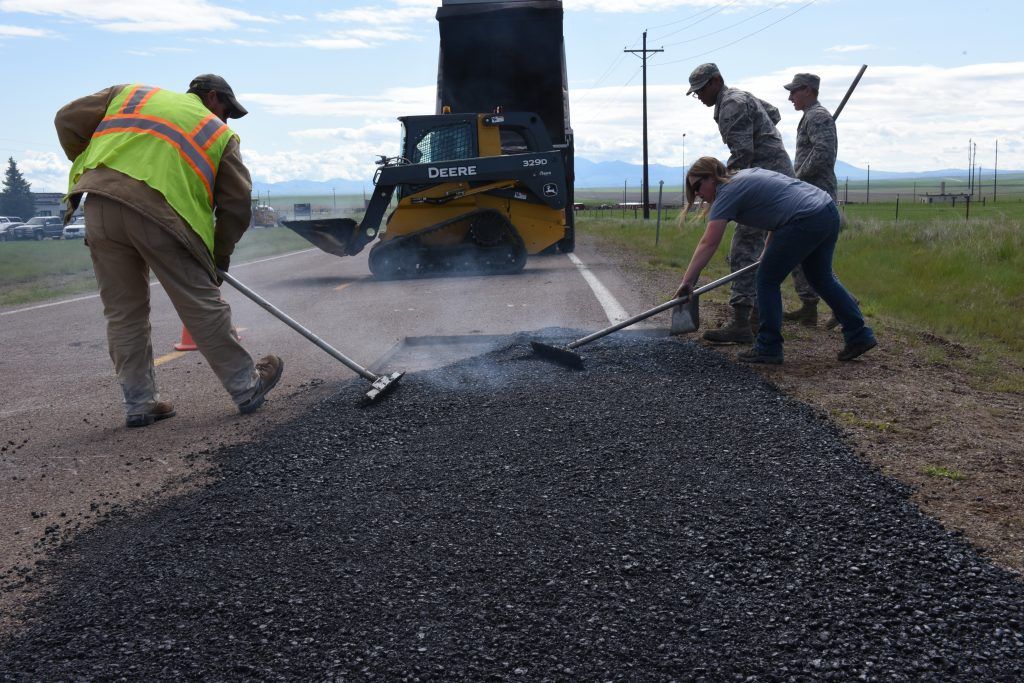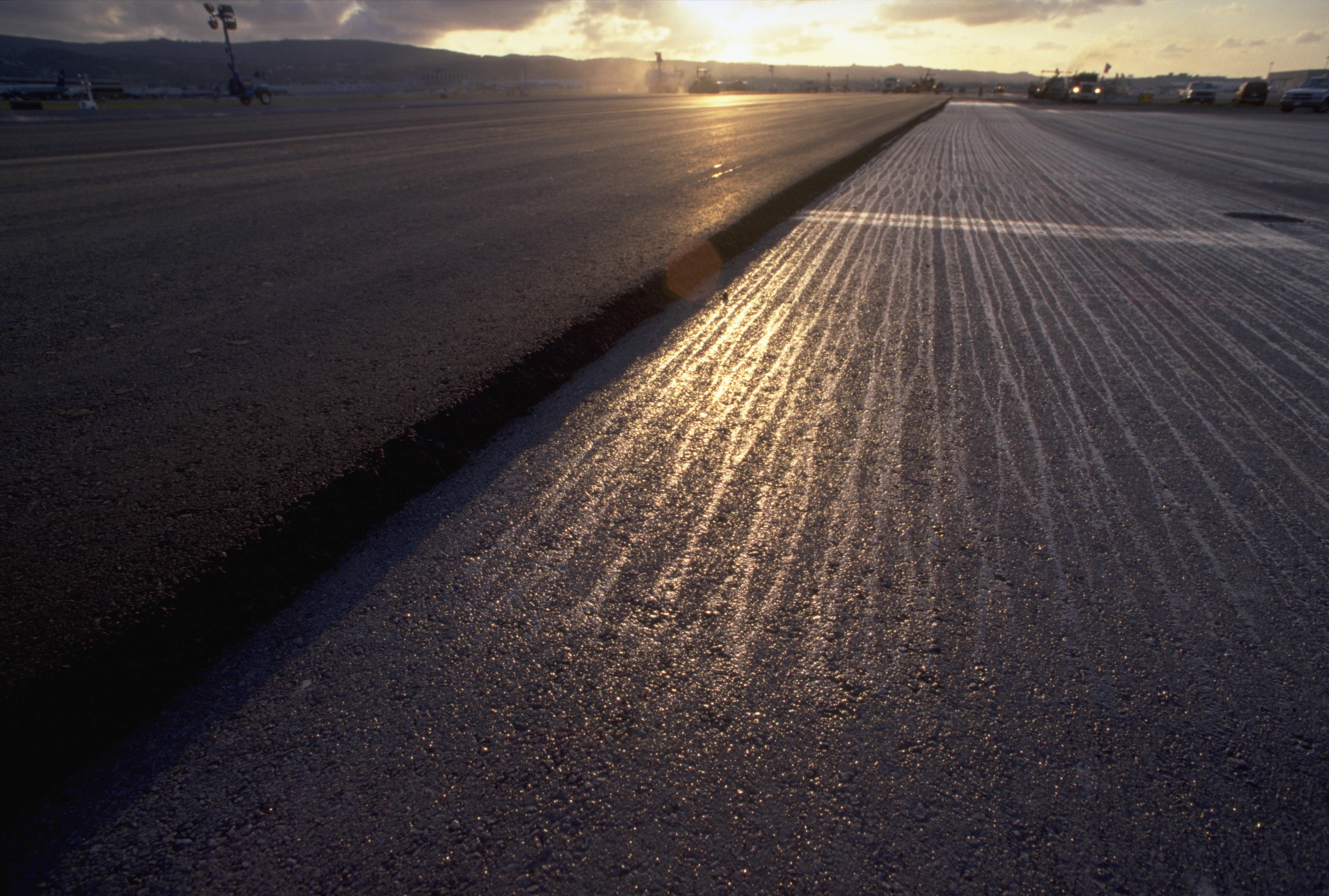Hot Mix Asphalt Paving: Your Entrance to Premium Angled Parking Solutions
Hot Mix Asphalt Paving: Your Entrance to Premium Angled Parking Solutions
Blog Article
Opening the Keys of Warm Mix Asphalt Modern Technology
Checking out the depths of warm mix asphalt innovation uncovers a globe where careful processes and precise solutions assemble to shape our roadways and facilities. The fusion of binders, fillers, and accumulations isn't simply a construction job but a critical orchestration of toughness and efficiency.
Relevance of Hot Mix Asphalt
Warm Mix Asphalt plays a critical function in modern framework development as a result of its resilience and cost-effectiveness. As one of the most typically made use of paving product for roads, freeways, and vehicle parking lots, Warm Mix Asphalt offers an array of benefits that add to its significance in construction tasks. One key benefit is its capacity to endure hefty traffic tons and rough weather conditions, giving a long-lasting and trustworthy surface area for transport networks. Additionally, Hot Mix Asphalt is economical in both initial building and long-lasting upkeep, making it a recommended choice for several infrastructure projects.
The toughness of Warm Mix Asphalt originates from its composition, that includes accumulations, binder, and filler products that are very carefully picked and blended to satisfy certain performance demands. This accurate combination results in a solid and adaptable pavement that can endure frequent usage without substantial deterioration. Additionally, Hot Mix Asphalt is 100% recyclable, further boosting its sustainability and ecological benefits. On the whole, the relevance of Hot Mix Asphalt in infrastructure growth can not be underrated, as it remains to be a cornerstone of modern-day building practices.
Components of Asphalt Mixes
The structure of asphalt blends is composed of carefully chosen accumulations, binder, and filler products that are essential for accomplishing details performance requirements. Aggregates are the main part of asphalt blends, giving strength and stability. The binder, normally asphalt or asphalt concrete, holds the aggregates together and offers versatility and longevity to the mix.
The combination and proportion of these components play a substantial duty in establishing the top quality and efficiency of the asphalt mix. Designers meticulously make the mix to fulfill details needs, taking into consideration variables like website traffic quantity, environment problems, and sidewalk life expectancy. Appropriate selection and balancing of aggregates, binder, and fillers are necessary for creating sturdy, resilient asphalt pavements.
Combining and Manufacturing Techniques

Once the aggregates are chosen, the binder, commonly asphalt concrete, is contributed to bind the products together. The binder's high quality and quantity substantially affect the mix's versatility, stamina, and resistance to ecological variables. In addition, fillers like moisturized lime or Portland cement may be included useful link to boost details features of the asphalt mix, such as its workability or dampness resistance.
Throughout production, the aggregates and binder are heated, typically in between 250-325 ° F(121-163 ° C ), to assist in mixing and guarantee proper layer of the accumulations. The mixing process has to be complete to accomplish a homogeneous combination that advertises the desired performance features of the asphalt. Different methods, such as batch blending or drum blending, are utilized to achieve high-quality and regular asphalt mixes for construction tasks.
Variables Impacting Asphalt Performance
Variables affecting asphalt performance include a variety of variables that influence the toughness, longevity, and total quality of asphalt sidewalks. One key variable is the high quality of products utilized in the asphalt mix. The kind and source of accumulations, the binder quality, and the ingredients all play a significant function in establishing the performance of the asphalt sidewalk. The gradation of accumulations is essential as it impacts the mix's resistance, workability, and security to cracking and rutting.

Design considerations, such as pavement thickness and drainage, are vital in making certain the lasting efficiency of the asphalt sidewalk. By meticulously considering these engineers, contractors and elements can optimize asphalt efficiency and boost the solution life of pavements.
Sustainable Practices in Asphalt Technology

Furthermore, the advancement of warm-mix asphalt (WMA) technologies has gained grip over the last few years. WMA permits the production and positioning of asphalt mixes at lower temperature levels contrasted to conventional hot-mix asphalt, resulting in lowered power usage and greenhouse gas discharges. Furthermore, the usage of porous asphalt blends can assist reduce stormwater drainage problems by allowing water to penetrate through the sidewalk and into the ground, advertising natural water purification and charge processes. By implementing these sustainable methods, the asphalt sector can add to building a much more environmentally friendly and resilient framework network.
Verdict
In final thought, warm mix asphalt technology plays a vital duty in modern facilities advancement because of its durability and cost-effectiveness. By thoroughly stabilizing elements, employing appropriate blending strategies, and considering various factors, engineers can develop top quality asphalt mixes that withstand hefty website traffic loads and severe climate problems. Welcoming lasting practices, such as using warm-mix innovations and recycled products, additionally improves the environmental kindness of asphalt innovation.
Blending and production techniques in warm mix asphalt technology involve the exact combination and handling of accumulations, binder, and fillers to develop a long lasting and high-performance asphalt mix.Elements influencing asphalt efficiency include an array of variables that affect the sturdiness, long life, and overall top quality of asphalt pavements. Lasting methods in asphalt modern technology include This Site various initiatives aimed at minimizing the ecological influence of asphalt production and paving procedures. By including recovered asphalt sidewalk (RAP) and recycled asphalt shingles (RAS) right into brand-new asphalt blends, the industry can substantially minimize the intake of raw products and power, while additionally reducing garbage dump waste.
WMA permits for the manufacturing and placement of asphalt mixes at reduced temperature levels compared to conventional hot-mix asphalt, resulting in minimized energy intake and greenhouse gas emissions.
Report this page